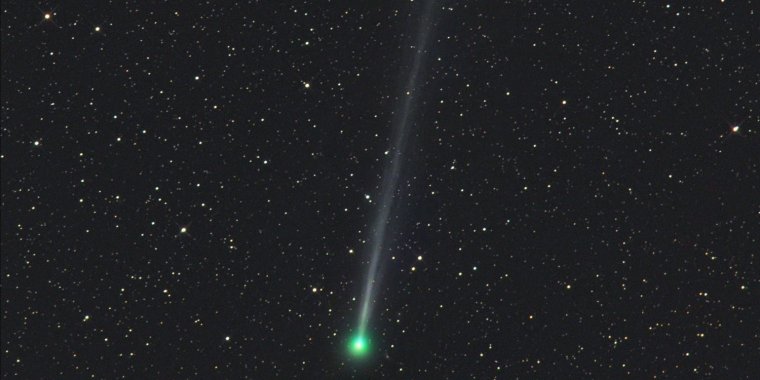| News / Space News |
NASA Telescope Studies Quirky Comet 45P
When comet 45P zipped past Earth early in 2017, researchers observing from NASA’s Infrared Telescope Facility, or IRTF, in Hawai’i gave the long-time trekker a thorough astronomical checkup. The results help fill in crucial details about ices in Jupiter-family comets and reveal that quirky 45P doesn’t quite match any comet studied so far.

Comet 45P/Honda-Mrkos-Pajdušáková. Image credits: Gerald Rhemann/NASA
The team measured the levels of nine gases released from the icy nucleus into the comet’s thin atmosphere, or coma. Several of these gases supply building blocks for amino acids, sugars and other biologically relevant molecules.
Of particular interest were carbon monoxide and methane, which are so hard to detect in Jupiter-family comets that they’ve only been studied a few times before.
The gases all originate from the hodgepodge of ices, rock and dust that make up the nucleus. These native ices are thought to hold clues to the comet’s history and how it has been aging.
The comet—officially named 45P/Honda-Mrkos-Pajdušáková—belongs to the Jupiter family of comets, frequent orbiters that loop around the Sun about every five to seven years. Much less is known about native ices in this group than in the long-haul comets from the Oort Cloud.
The results reveal that 45P is running so low on frozen carbon monoxide, that it is officially considered depleted. By itself, this wouldn’t be too surprising, because carbon monoxide escapes into space easily when the Sun warms a comet. But methane is almost as likely to escape, so an object lacking carbon monoxide should have little methane. 45P, however, is rich in methane and is one of the rare comets that contains more methane than carbon monoxide ice.
It’s possible that the methane is trapped inside other ice, making it more likely to stick around. But the researchers think the carbon monoxide might have reacted with hydrogen to form methanol. The team found that 45P has a larger-than-average share of frozen methanol. (NASA)
YOU MAY ALSO LIKE

